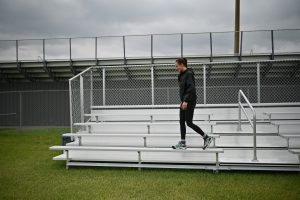ACLR 9-12 months post-op
I talk about my rehab from 9-12 months post-op & my return to sport

As a reminder, my injury was August 2021, my surgery was end of November 2021, so my year mark was end of November 2022. My surgery was ACL reconstruction with a bone-patellar-bone graft and a lateral meniscectomy, as well as, an additional scar on the back of my knee due to a surgical error on the surgeons part.
You’ve hit a year post-op, this is when everyone has been saying you can get back to sport. You’ve heard the stats – “for every month after 8 months post-op ACLR that return to pre-injury activity is delayed, second ACL injury risk is reduced by nearly 30% – Bodkin et al 2021”. It’s important to take your time.
Those 3 months were continual work. It doesn’t completely stop. My biggest pet peeve as a physio is that your physio told you that you are good to go at 6/7/8 months post-op simply because they did 3-4 hop tests that deemed you ‘ready for sport’ and they are unequipped to continue to program you further into your rehab. This should NOT be the case. My physio clinic has a strength coach and strength & conditioning team as part of the process and therefore, my training included everything I needed to feel ready to return to sport.

I’ve been through it, I know that a year is a long time, especially being away from your number 1 sport. As a physio and a patient, the question is always – risk versus reward. For example, I was looking at returning to snowboarding. I had a follow up with my physio where my numbers on my vertical jump tests (eccentric control) were continuing to improve as well as my RSI (reactive strength index), he checked my psych profiles (confidence returning to sport and kinesiophobia) which were stable and good. Personally, I felt I had put in the work up to this point and was confident my knee and leg would be able to handle the first day back out. For me, the risk was low. I had a great first day back out on the hills and felt great the next day as well.
No, my knee didn’t feel 100% or the exact same as the other side. I think something that isn’t talked about is the gradual process of that happening. In the scheme of life and even this injury, a year isn’t that long of a time for your body to completely adjust to how much change it just had to go through.
Returning to your less important sports is still different than returning to your number one sport, that has a lot of pivoting, and is the sport that you injured yourself during – for me that is soccer. I had been chatting with my physio to keep change of direction hopping drills in my rehab program for when that was going to happen. There isn’t women’s soccer here in Canmore where I live so I had to create the team before being able to play.
Here’s how I approached my first game back of indoor soccer
- Day before, less intense training for less fatigue in my leg
- Day of, ensuring lots of nutrition, water and sleep
- Warm up: intentional running warm up as well as lateral drills and backtracking/jockeying – got the rest of the team to join in as well!
- Informing the rest of the women that I might not be going 100% and will need more breaks – this is important to tell your coach/teammates/etc.
- Enjoy it! I had a blast
GOALS ACHIEVED!

- Return to running pain free – 10km run check
- Return to cycling (reach past longest distance of 60km) – 100km in the bag! Check
- Return to other activities – I’ve participated in so much hiking, rockclimbing and regular training
- Return to snowboarding – check
- Return to soccer (indoor) – check
- Return to soccer (outdoor) – planning for this upcoming spring with the new women’s team in Canmore that I’ve organized
My ‘rehab’ has not stopped or finished at this point. I am still doing check in’s with my physio just more spaced out so about every 2 months rather than once a month. I am able to return to most of my normal training routine but I make sure to include anything that he suggests to help with deceleration and change of direction.
The last thing that needs to be said is that ACLR rehab/training/maintenance NEEDS to continue well past a year post-op. From a physio perspective, I have seen too many knee patients who are 1.5-3 years post-op and are either having knee pain, a second ACLR surgery or did not get the advice to continuing some sort of training.
You can purchase the ACL Injuries ebook where I talk about my experience, what to expect, graft options, how to find a physio, the mental aspect of the injury, and physical timelines to expect during recovery.
You can find my Guides on Instagram here – they have all my ACLR training videos:
If you have questions regarding ACLR, I do recommend you speak to your own physio and surgeon as they know your injury. There are a few instagram pages that have great resources for those going through an ACLR which you can find here:


